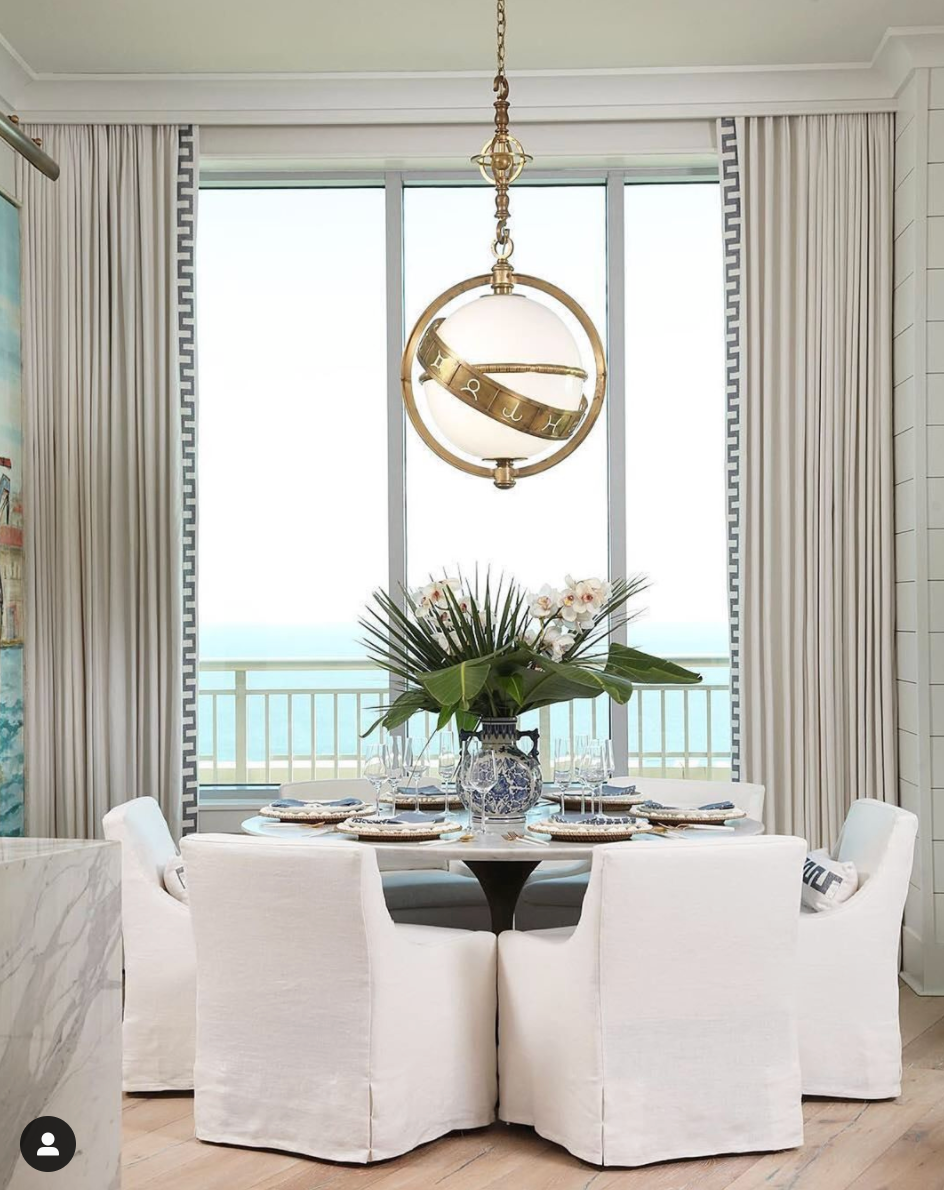Tips For Lighting A Dining Room
The right lighting is absolutely critical in the dining room – probably more so than in any other room in the house – because light is how you create an atmosphere. Here are Poky’s seven top tips for lighting your dining area to flatter your guests and make your meals an experience…
Design icon Kelly Hoppen said:
‘Because a dining room is used a lot more at night time you can be a little bit more dramatic. The most crucial part of it is lighting. And for me, low level lighting is so integral to a dining table because when you’re looking across at people it makes it so much more intimate.’
We couldn’t agree more, but how do achieve the best effect? Here are some practical tips and ideas for lighting your dining room….

1) Base your lighting around your dining table
As another interiors guru (and GIDC presenter) Daniel Hopwood put it: ‘What’s crucial is to create an atmosphere around a table, so that when you have people around for dinner the rest of the room recedes.‘
The way to do that is to base your lighting design around the dining table, rather than the room as a whole (as you might in the living room, say).
low: typically, the bottom of the light fixture should be around 36 inches above the table.

2) Use a single large pendant light over a small dining table
As the GIDC’s Sophie Robinson advised: ‘It’s really important that your light works in scale with your dining table, but if in doubt I always say: the bigger, the better. If you’ve got a small round table then one central pendant light is going to be the way to go.’
Alternatively…

3) Use multiple pendants in odd numbers
If you have a long rectangular dining table, then you can go for a large chandelier, or how about a series of matching pendant lights? For a longer table use a row of lights: odd numbers generally work best, so typically three or five pendants in a line.

4) Use pendant lights to demarcate a dining area in an open plan space
In an open plan living space or a kitchen-diner, a large pendant light over the dining table can help with your ‘zoning’. For example, even in daylight this large pendant helps to focus the eye on the table and separate the eating zone from the rest of the room.

5) Use a dimmer to control mood (and flatter your guests)
If you’re eating with the kids in the daytime – or if your dining table doubles as the place where they do their homework – you’ll want to have plenty of light. But at night you’ll want to turn it down low, so make sure you invest in a dimmer.
The best light for evening entertaining is low-level warm light – it creates an intimate atmosphere and, perhaps even more importantly, makes everyone look prettier. Think Monet’s Interior After Dinner (top) for inspiration.

6) Make a statement
Because the light over a dining table has such a specific use, it does give you the opportunity to do something dramatic. That doesn’t necessarily mean that you have to spend a fortune – chandeliers don’t have to break the bank.

7) Layer light with table lamps and wall lights
There will be times when you don’t want a glaring light, but then again a single light source will be too intimate… The solution to all these tricky problems is layered lighting.
Having multiple light sources gives you options: so give yourself a choice of moods with a few other lamps around the place. How about a table lamp on a sideboard, or a couple of wall lights to match your pendant?



























Comments